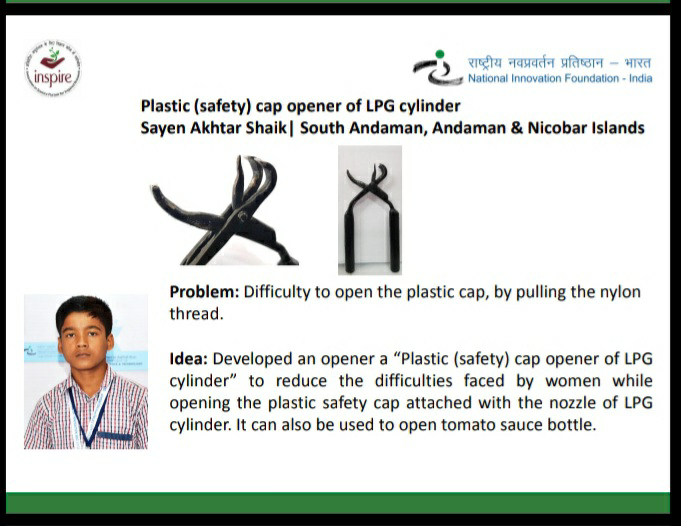Page No 15:
Question 1:
Which number is neither a prime number nor a composite number?
ANSWER:
1 is neither a prime number nor a composite number.
Page No 15:
Question 2:
Which of the following are pairs of co-primes?
(i) 8, 14
(ii) 4, 5
(iii) 17, 19
(iv) 27, 15
ANSWER:
Two numbers which have only 1 as a common factor are said to be co-prime or relatively prime or mutually prime numbers.
We can write 17 as 17 × 1 and 19 as 17 × 1.
Hence, 17 and 19 is a pair of co-prime numbers.
Page No 15:
Question 3:
List the prime numbers from 25 to 100 and say how many they are.
ANSWER:
There are a total of 16 prime numbers between 25 and 100 which are 29, 31, 37, 41, 43, 47, 53, 59, 61, 67, 71, 73, 79, 83, 89, 97.
Page No 15:
Question 4:
Write all the twin prime numbers from 51 to 100.
ANSWER:
If the difference between two co-prime numbers is 2, the numbers are said to be twin prime numbers.
Hence, the twin prime numbers between 51 and 100 are 59 and 61, 71 and 73.
Page No 15:
Question 5:
Write 5 pairs of twin prime numbers from 1 to 50.
ANSWER:
If the difference between two co-prime numbers is 2 then, the numbers are said to be twin prime numbers.
Hence, the twin prime numbers from 1 to 50 are (2,3), (5,7), (11,12), (17,19) and (29,30).
Page No 15:
Question 6:
Which are the even prime numbers?
ANSWER:
There is only even prime number which is 2.
Page No 17:
Question 1:
Factorise the following numbers into primes.
(i) 32
(ii) 57
(iii) 23
(iv) 150
(v) 216
(vi) 208
(vii) 765
(viii) 342
(ix) 377
(x) 559
ANSWER:
(i)
32 = 2 × 16
= 2 × 2 × 8
= 2 × 2 × 2 × 4
= 2 × 2 × 2 × 2 × 2
(ii)
57 = 3 × 19
(iii)
23 = 23 × 1
(iv)
150 = 2 × 75
= 2 × 3 × 25
= 2 × 3 × 5 × 5
(v)
216 = 2 × 108
= 2 × 2 × 54
= 2 × 2 × 2 × 27
= 2 × 2 × 2 × 3 × 9
= 2 × 2 × 2 × 3 × 3 × 3
(vi)
208 = 2 × 104
= 2 × 2 × 52
= 2 × 2 × 2 × 26
= 2 × 2 × 2 × 2 × 13
(vii)
765 = 3 × 255
= 3 × 3 × 85
= 3 × 3 × 5 × 17
(viii)
342 = 2 × 171
= 2 × 3 × 57
= 2 × 3 × 3 × 19
(ix)
377 = 13 × 29
(x)
559 = 13 × 43
Page No 19:
Question 1:
Find the HCF.
(i) 25, 40
(ii) 56, 32
(iii) 40, 60, 75
(iv) 16, 27
(v) 18, 32, 48
(vi) 105, 154
(vii) 42, 45, 48
(viii) 57, 75, 102
(ix) 56, 57
(x) 777, 315, 588
ANSWER:
(i)

HCF = 5
(ii)

HCF = 2 × 2 × 2= 8
(iii)
HCF = 5
(iv)

HCF = 1
(v)

HCF = 2
(vi)

HCF = 7
(vii)

HCF = 3
(viii)

HCF = 3
(ix)

HCF = 1
(x)
.png)
HCF = 3 × 7 = 21
Page No 19:
Question 2:
Find the HCF by the division method and reduce to the simplest form.
(i)
(ii)
(iii)
ANSWER:
(i) 
HCF = 25
(ii).png)
HCF = 19
(iii) 
HCF = 23
Page No 21:
Question 1:
Find the LCF.
(i) 12, 15
(ii) 6, 8, 10
(iii) 18, 32
(iv) 10, 15, 20
(v) 45, 86
(vi) 15, 30, 90
(vii) 105, 195
(viii) 12, 15, 45
(ix) 63, 81
(x) 18, 36, 27
ANSWER:
(i)
LCM = 3 × 5 × 4 = 60
(ii)
LCM = 2 × 3 × 4 × 5 = 120
(iii)
LCM = 2 × 9 × 16 = 288
(iv)
LCM = 2 × 2 × 3 × 5 = 60
(v)
LCM = 45 × 86 = 3870
(vi)
LCM = 2 × 3 × 3 × 5 = 90
(vii)
LCM = 3 × 5 × 7 × 13 = 1365
(viii)
LCM = 2 × 2 × 3 × 3 × 5 = 180
(ix)
LCM = 3 × 3 × 3 × 3 × 5 = 567
(x)
LCM = 2 × 2 × 3 × 3 × 3 = 108
Page No 21:
Question 2:
Find the HCF and LCM of the numbers given below. Verify that their product is equal to the product of the given numbers.
(i) 32, 37
(ii) 46, 51
(iii) 15, 60
(iv) 18, 63
(v) 78, 104
ANSWER:
(i) 
HCF = 1
LCM = 32 × 37 = 1184
Product of two numbers = 32 × 37 = 1184
Product of HCF and LCM = 1 × 1184 = 1184
(ii) 
HCF = 1
LCM = 46 × 51 = 2346
Product of two numbers = 46 × 51= 2346
Product of HCF and LCM = 1 × 2346 = 2346
(iii) 
HCF = 3 × 5 = 15
LCM = 3 × 5 × 4 = 60
Product of two numbers = 15 × 60 = 900
Product of HCF and LCM = 15 × 60 = 900
(iv) 
HCF = 3 × 3 = 9
LCM = 3 × 3 × 2 × 7 = 126
Product of two numbers = 18 × 63 = 1134
Product of HCF and LCM = 9 × 126 = 1134
(v) 
HCF = 2 × 13 = 26
LCM = 2 × 13 × 3 × 4 = 312
Product of two numbers = 78 × 104 = 8112
Product of HCF and LCM = 26 × 312 = 8112
Page No 23:
Question 1:
Choose the right option.
(i) The HCF of 120 and 150 is ................... .
(1) 30
(2) 45
(3) 20
(4) 120
(ii) The HCF of this pair of numbers is not 1.
(1) 13, 17
(2) 29, 20
(3) 40, 20
(4) 14, 15
ANSWER:
(i)

HCF = 2 × 3 × 5 = 30
Hence, the correct answer is option (1).
(ii)
40 = 2 × 2 × 2 × 5
20 = 2 × 2 × 5
The HCF of 20 and 40 is 2 × 2 × 5 or 20.
Hence, the correct answer is option (3).
Page No 23:
Question 2:
Find the HCF and LCM.
(i) 14, 28
(ii) 32, 16
(iii) 17, 102, 170
(iv) 23, 69
(v) 21, 49, 84
ANSWER:
(i) 
HCF = 2 × 7 = 14
LCM = 2 × 7 × 2 = 28
(ii) 
HCF = 2 × 2 × 2 × 2 = 16
LCM = 2 × 2 × 2 × 2 × 2 = 32
(iii) 
HCF = 17
LCM = 17 × 2 × 3 × 5 = 510
(iv) 
HCF = 23
LCM = 23 × 3 = 69
(v) 
HCF = 7
LCM = 3 × 4 × 7 × 7 = 588
Page No 23:
Question 3:
Find the LCM.
(i) 36, 42
(ii) 15, 25, 30
(iii) 18, 42, 48
(iv) 4, 12, 20
(v) 24, 40, 80, 120
ANSWER:
(i) 
LCM = 2 × 2 × 3 × 3 × 7 = 252
(ii) 
LCM = 2 × 3 × 5 × 5 = 150
(iii) 
LCM = 2 × 2 × 2 × 2 × 3 × 3 × 7 = 1008
(iv) 
LCM = 2 × 2 × 3 × 5 = 60
(v) 
LCM = 2 × 2 × 2 × 2 × 3 × 5 = 240
Page No 23:
Question 4:
Find the smallest number which when divided by 8, 9, 10, 15, 20 gives a remainder of 5 every time.
ANSWER:
LCM of 8, 9, 10, 15, 20 is given by
LCM = 2 × 2 × 2 × 3 × 3 × 5 = 360
Hence, 365 is the smallest number which when divided by 8, 9, 10, 15, 20 gives a remainder of 5 every time.
Page No 23:
Question 5:
Reduce the fractions , , to the lowest terms.
ANSWER:
Page No 23:
Question 6:
The LCM and HCF of two numbers are 432 and 72 respectively. If one of the numbers is 216, what is the other ?
ANSWER:
Let the other number be x.
Now, HCF × LCM = Product of two numbers
⇒ 72 × 432 = x × 216
= 144
Hence, the other number is 144.
Page No 23:
Question 7:
The product of two two-digit numbers is 765 and their HCF is 3. What is their LCM?
ANSWER:
HCF × LCM = Product of two numbers
⇒ 3 × LCM = 765
= 255
Hence, the LCM of the two numbers is 255.
Page No 23:
Question 8:
A trader has three bundles of string 392 m, 308 m and 490 m long. What is the great est length of string that the bundles can be cut up into without any left over string?
ANSWER:
The greatest length of string that the bundles can be cut up into without any left over string is given by the HCF of 392, 308 and 490.
HCF = 2 × 7 = 14
Hence, the greatest length of string that the bundles can be cut up into without any left over string is 14 m.
Page No 23:
Question 9:
Which two consecutive even numbers have an LCM of 180?
ANSWER:
Let us suppose the two consecutive even numbers be 2x and 2x + 2.
Now, product of two numbers = HCF × LCM
⇒ (2x)(2x + 2) = 2 × 180 (HCM of two even number is 2)
⇒ (x)(2x + 2) = 180
⇒ 2x2 + 2x = 180
⇒ 2x2 + 2x − 180 = 0
⇒ x2 + x − 90 = 0
⇒ (x − 9)(x + 10) = 0
⇒ x − 9 = 0 or x + 10 = 0
⇒ x = 9 or x = −10 (Neglecting)
Hence, the two consecutive even numbers are18 and 20.
.png)
.png)
.png)
.png)






























.png)
.png)


